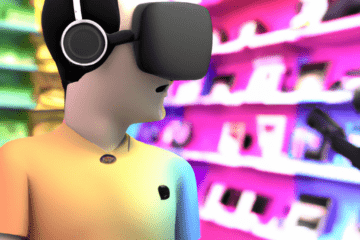With the advent of Web3, the world is gradually shifting towards a decentralized, trustless, and transparent infrastructure. One of the areas where this technology is being applied is the development of smart cities. Web3 technology is providing the foundation for the creation of more efficient, sustainable, and citizen-centric cities. This blog will explore how Web3 is driving the development of smart cities.

What is Web3?
Web3 refers to the next generation of the World Wide Web, characterized by decentralized applications (DApps), blockchain technology, and smart contracts. It is the evolution of the current Web2, which is dominated by centralized entities like Google, Facebook, and Amazon. Web3 is designed to give users more control over their data, eliminate middlemen, and provide a more secure and transparent web experience.
What are Smart Cities?
Smart cities are urban areas that use advanced technology and data analytics to enhance the quality of life for its citizens, improve sustainability, and streamline urban services. These cities leverage data from various sources such as sensors, IoT devices, and citizen feedback to create a more responsive and efficient infrastructure. Smart cities are characterized by features like intelligent transportation systems, energy-efficient buildings, and enhanced public services.
Web3 and Smart Cities
Web3 is driving the development of smart cities in several ways. Firstly, blockchain technology provides a secure and transparent way to store and manage data. This is crucial in a smart city where data from various sources is used to make decisions. Blockchain technology ensures that data is tamper-proof and can be easily audited, providing citizens with a higher level of trust in the system.
Secondly, Web3 technology allows for the development of decentralized applications that can be used to manage various aspects of a smart city. These DApps can be developed by anyone and can be used to create a more citizen-centric infrastructure. For example, a DApp can be developed to allow citizens to vote on municipal decisions or to report potholes in the city.
Thirdly, smart contracts, which are a feature of blockchain technology, can be used to automate various processes in a smart city. Smart contracts are self-executing contracts with the terms of the agreement between buyer and seller being directly written into lines of code. These contracts can be used to automate various processes in a smart city such as rent payments, parking fees, and waste management.
Fourthly, Web3 technology allows for the creation of decentralized marketplaces where citizens can buy and sell goods and services. These marketplaces are powered by cryptocurrencies, which allow for faster and cheaper transactions without the need for intermediaries. This can lead to a more efficient and cost-effective system of commerce in a smart city.
Benefits of Web3-Powered Smart Cities
The benefits of Web3-powered smart cities are numerous. Firstly, the use of blockchain technology ensures that data is secure and transparent, leading to a higher level of trust in the system. This can lead to more citizen engagement and participation in municipal decision-making processes.
Secondly, the use of DApps in smart cities can lead to a more citizen-centric infrastructure. Citizens can use these applications to report issues, provide feedback, and participate in decision-making processes. This can lead to a more responsive and efficient city infrastructure.
Thirdly, the automation of various processes in a smart city using smart contracts can lead to a more streamlined and efficient system. This can lead to cost savings for the municipality, which can then be passed on to the citizens.
Fourthly, the use of decentralized marketplaces in smart cities can lead to a more efficient and cost-effective system of commerce. This can benefit both the citizens and the municipality, leading to a more prosperous and sustainable city.
Challenges and Risks
There are also challenges and risks associated with the implementation of Web3-powered smart cities. One of the challenges is the interoperability of various blockchain systems. For smart cities to function optimally, various blockchain systems must be able to communicate with each other seamlessly. This requires the development of standards and protocols that are universally accepted.
Another challenge is the need for skilled personnel to manage and maintain the systems. The implementation of Web3-powered smart cities requires personnel with expertise in areas like blockchain development, smart contract development, and DApp development. There is a shortage of such personnel, and this can lead to delays and increased costs.
One of the risks associated with Web3-powered smart cities is the potential for data breaches. Although blockchain technology provides a more secure way of storing and managing data, there is still a risk of data breaches. This risk can be minimized by implementing robust security measures and protocols.
Another risk is the potential for regulatory hurdles. The implementation of Web3-powered smart cities requires a supportive regulatory environment. However, some regulatory bodies may be resistant to the adoption of these technologies, leading to delays and increased costs.
Conclusion
In conclusion, Web3 technology is driving the development of smart cities by providing a more secure, transparent, and citizen-centric infrastructure. Blockchain technology, DApps, smart contracts, and decentralized marketplaces are some of the features of Web3 that are being used to create more efficient, sustainable, and prosperous cities. Although there are challenges and risks associated with the implementation of Web3-powered smart cities, the benefits far outweigh the risks. The implementation of Web3-powered smart cities is the future of urban development, and it is essential that municipalities embrace this technology to create a more responsive, efficient, and sustainable urban infrastructure.


